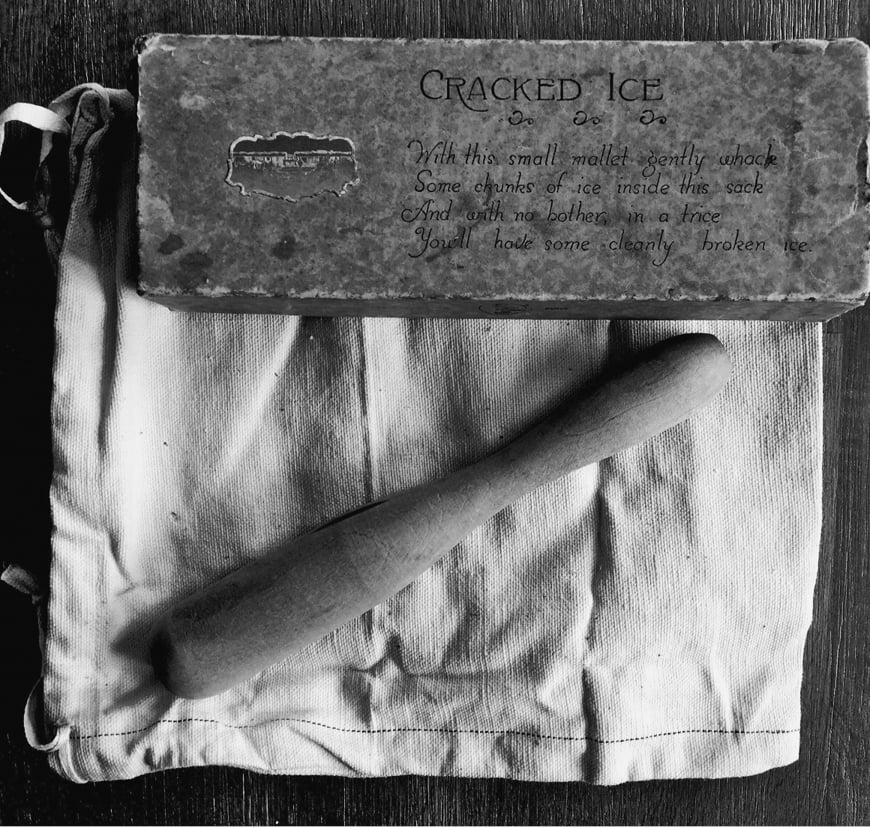Lewis bag is the modern term for the stout sack, usually made of canvas, used to hold ice so that it may be cracked with a bat or mallet. Ice bag-and-mallet sets were a common household item in 1920s America, ostensibly for use in ice cream making, which requires large quantities of cracked ice. Of course, so does mixing drinks, then illegal due to Prohibition, and one may assume that many of these sets at least did double duty.
Usually these sets consisted of a largish bag of perhaps 10 by 15 inches (25 by 37.5 cm) with a good-sized wooden mallet of conventional construction. By the 1940s, smaller sets began appearing that were more adapted to making a round or two of drinks than a tub of ice cream. Some of these replaced the mallet with a turned wooden bat, handier if less efficient. One such set bore on its box the verse
With this small mallet gently whack Some chunks of ice inside the sack And with no bother, in a trice You’ll have some cleanly broken ice.
Such bar niceties faded away in the 1970s, perhaps hastened by the rise of the blender and the decline of stirred drinks, the main style that requires cracked ice. However, in the late 1990s, just in time for the cocktail renaissance, an item called “The Lewis—Authentic 1940s Ice Bag” began appearing in stores, with the bag accompanied by a standard wooden muddler in place of the bat and a little booklet of classic cocktails. Before long, bartenders and cocktail enthusiasts began making their own bags, for which “Lewis bag” had become (de facto, anyway) the generic name.
The Lewis bag is still the best way of producing the very finely cracked ice demanded by drinks such as the Mint Julep: with a large, heavy mallet, it is quick and thorough, and the canvas wicks away excess moisture. See ice mallet and Mint Julep.
Wondrich, David. Esquire Drinks. New York: Hearst, 2002.
By: David Wondrich
 The 1930s precursor to the Lewis bag and “mallet.” Source: Wondrich Collection.
The 1930s precursor to the Lewis bag and “mallet.” Source: Wondrich Collection.
